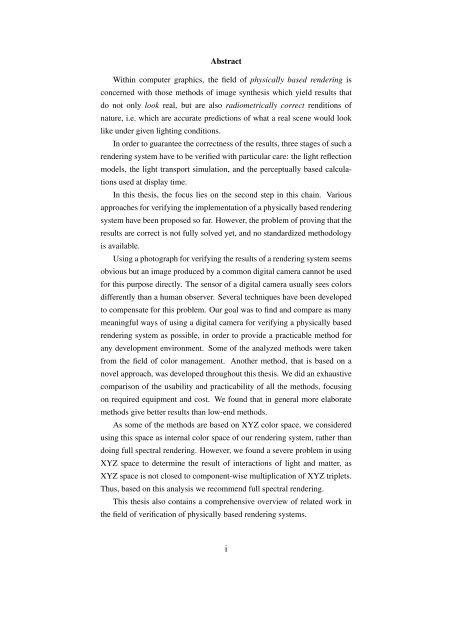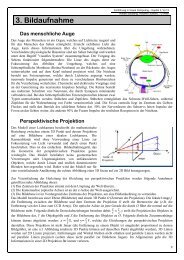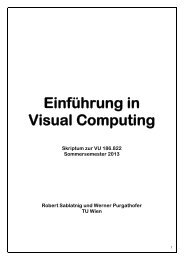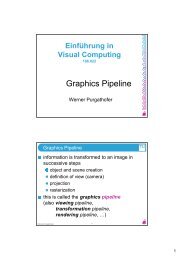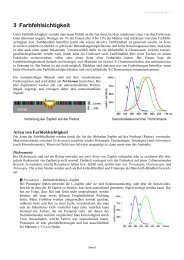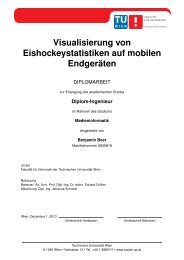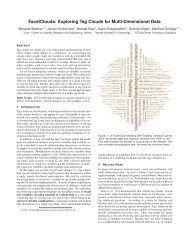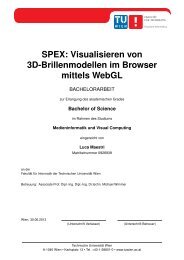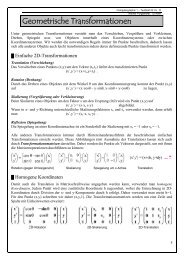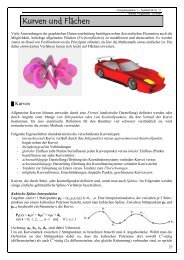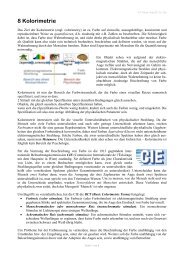Usability of Digital Cameras for Verifying Physically Based ...
Usability of Digital Cameras for Verifying Physically Based ...
Usability of Digital Cameras for Verifying Physically Based ...
Create successful ePaper yourself
Turn your PDF publications into a flip-book with our unique Google optimized e-Paper software.
Abstract<br />
Within computer graphics, the field <strong>of</strong> physically based rendering is<br />
concerned with those methods <strong>of</strong> image synthesis which yield results that<br />
do not only look real, but are also radiometrically correct renditions <strong>of</strong><br />
nature, i.e. which are accurate predictions <strong>of</strong> what a real scene would look<br />
like under given lighting conditions.<br />
In order to guarantee the correctness <strong>of</strong> the results, three stages <strong>of</strong> such a<br />
rendering system have to be verified with particular care: the light reflection<br />
models, the light transport simulation, and the perceptually based calcula-<br />
tions used at display time.<br />
In this thesis, the focus lies on the second step in this chain. Various<br />
approaches <strong>for</strong> verifying the implementation <strong>of</strong> a physically based rendering<br />
system have been proposed so far. However, the problem <strong>of</strong> proving that the<br />
results are correct is not fully solved yet, and no standardized methodology<br />
is available.<br />
Using a photograph <strong>for</strong> verifying the results <strong>of</strong> a rendering system seems<br />
obvious but an image produced by a common digital camera cannot be used<br />
<strong>for</strong> this purpose directly. The sensor <strong>of</strong> a digital camera usually sees colors<br />
differently than a human observer. Several techniques have been developed<br />
to compensate <strong>for</strong> this problem. Our goal was to find and compare as many<br />
meaningful ways <strong>of</strong> using a digital camera <strong>for</strong> verifying a physically based<br />
rendering system as possible, in order to provide a practicable method <strong>for</strong><br />
any development environment. Some <strong>of</strong> the analyzed methods were taken<br />
from the field <strong>of</strong> color management. Another method, that is based on a<br />
novel approach, was developed throughout this thesis. We did an exhaustive<br />
comparison <strong>of</strong> the usability and practicability <strong>of</strong> all the methods, focusing<br />
on required equipment and cost. We found that in general more elaborate<br />
methods give better results than low-end methods.<br />
As some <strong>of</strong> the methods are based on XYZ color space, we considered<br />
using this space as internal color space <strong>of</strong> our rendering system, rather than<br />
doing full spectral rendering. However, we found a severe problem in using<br />
XYZ space to determine the result <strong>of</strong> interactions <strong>of</strong> light and matter, as<br />
XYZ space is not closed to component-wise multiplication <strong>of</strong> XYZ triplets.<br />
Thus, based on this analysis we recommend full spectral rendering.<br />
This thesis also contains a comprehensive overview <strong>of</strong> related work in<br />
the field <strong>of</strong> verification <strong>of</strong> physically based rendering systems.<br />
i


